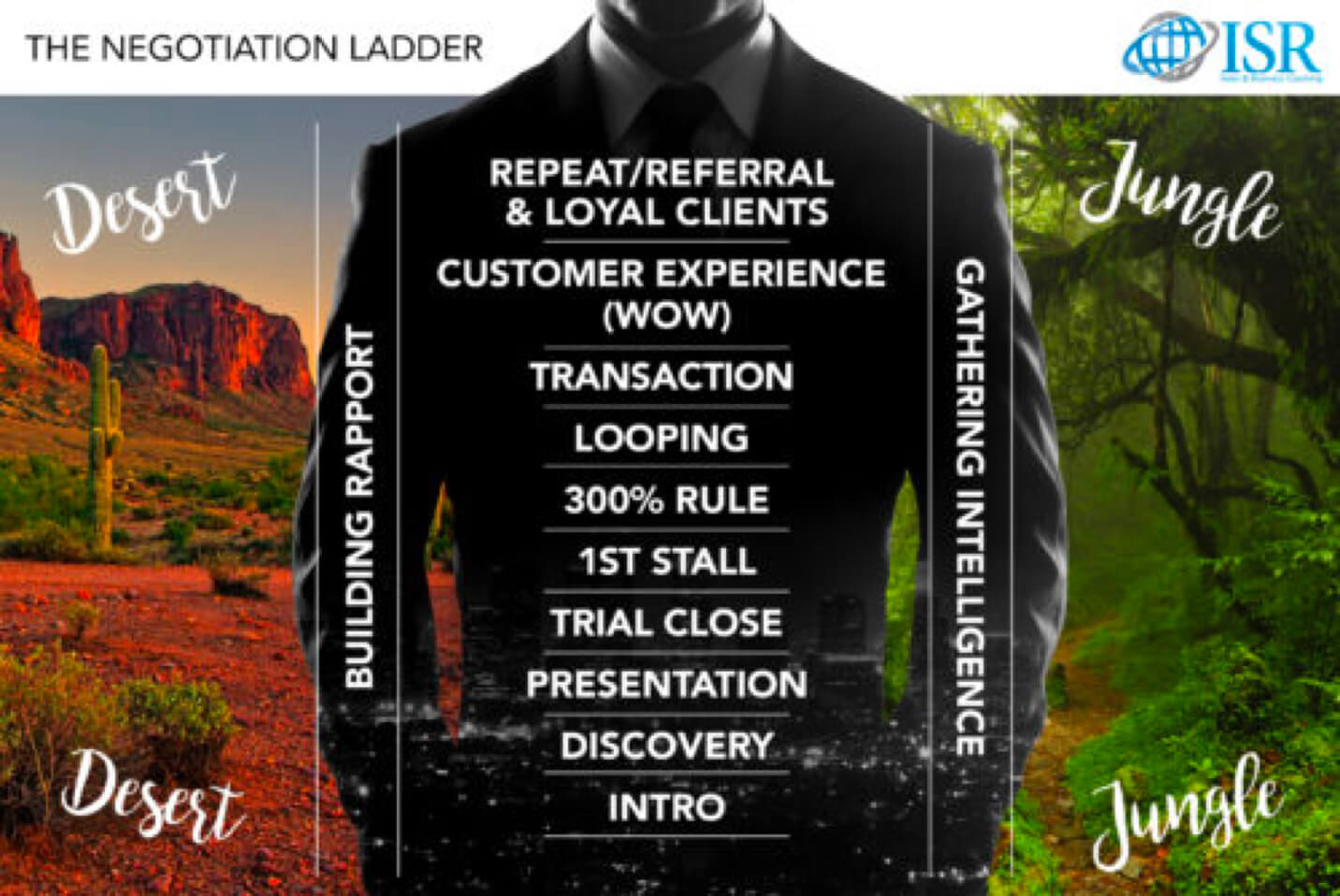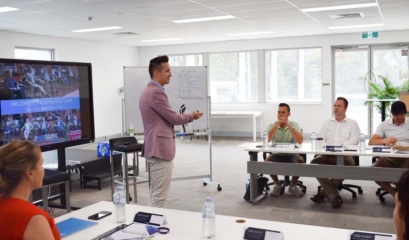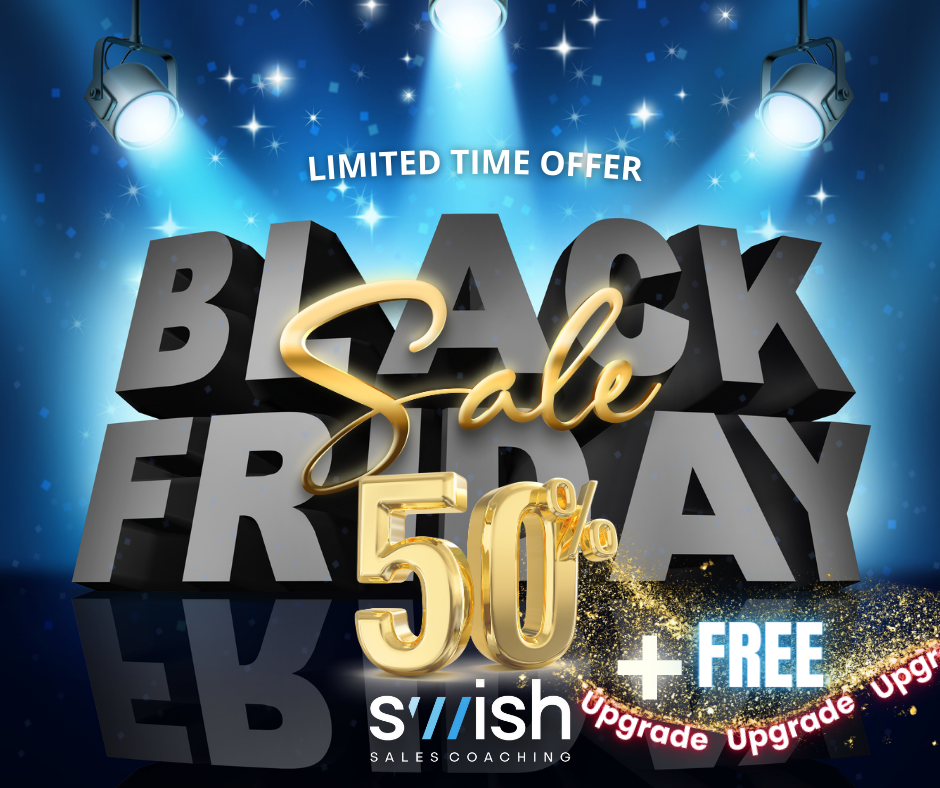Sales Techniques
In today’s digital age, making a sale can be a difficult process to navigate. This is especially true if you’re not confident with the art of negotiating or closing. Customers are becoming increasingly savvy because they have more options to choose from than ever before, meaning that we as salespeople have to work even harder.
One part of working harder is working smarter, which is why we’ve put together this resource full of the best tips and advice from the SWISH Sales Coaching founders Ryan Tuckwood and Jack Corbett. Whether you work in corporate sales, phone sales, in B2B or even in retail, The Ultimate Guide will help you have better, more persuasive and more effective conversations that get the deal done and help you come out on top.
This is the process that had Ryan move from the bottom of a 21 person sales ladder to top salesperson in just five weeks, saw Jack managing a multi-million dollar company at just 19, and gives our clients an average 41% increase in revenue.
Individual sales staff
Are you hungry to get more sales and earn bigger commissions? Our personal, targeted sales training is perfect for giving you the skills you need to get better at selling techniques in retail and blow your peers out of the water.
Business owners and entrepreneurs
When striking out on your own, you need to know what works – and you do, when it comes to your product or service. But do you know how to sell that great service to someone who needs it?
Business development managers
Sales managers
Types Of Selling
There’s no shortage of selling methods that claim to be ‘the absolute best’ way to increase your sales. However, many of them are outdated or devised in a time before customers were able to look up competitors online to find better value or service as quickly or as easily. The team at SWISH Sales Coaching knows that you need the most up-to-date information to identify and apply the right method to any given situation. This is, of course, a skill that comes with time.
We’ve found there are several main archetypes of selling, and each has its own benefits and situations where they’re the best to use.
Read more about each type below.
Product-Based Selling
Possibly the most commonly known type of sales is that with a focus on the product. This method operates under the belief that your product is the absolute best, provides infinite value and will change your customer’s life forever – unlike that of your competitor.
However, this singular focus type of selling can be a bit difficult when customers can simply go next door or online to buy the same thing at a cheaper price. It’s important to keep flexible and recognise that you’ll really need to push your product’s Unique Selling Point to make sure the customer buys from you, and not someone else.
Solution-Based Selling
This type of selling is more complex than the first and looks to solve a problem the customer has. This can be done either with a product, or even a service. In this method, the value comes from this solution and the idea of simplifying the customer’s life or adding value by solving their problem.
When using this method, make sure you place emphasis on how your product or service solves the exact problem your customer has, and how it’s right in front of them – so they don’t need to go looking anywhere else (like your competitors).
Insight-Based Selling
Perhaps the trickiest of the three traditional methods of selling, this method requires a little more insight on your part as a salesperson. In short, the idea is to identify your customers’ pain points and offer them a solution before they themselves have realised there’s a problem. Often confused with the previous method, the key is that this is more proactive, bringing the problem to your customers’ attention and immediately offering a solution.
Be careful not to be too pushy when using this method – there is a fine line between being proactive and being pushy and interfering where the customer doesn’t want you. Make sure you’re reading any signals they’re giving you and back off or redirect as needed.

Service-Based Selling
And then, of course, there’s our fourth kind – service focussed, human to human selling.
This method is based on our tried and true SWISH methodology and combines aspects of each three of the above methods. The difference in our method is that we focus on using world-class service as a tool to understand customers and offer solutions that they actually need.
Don’t think about what your customer is buying – instead, think about why they’re buying it. Talk to your customer about a reduction in bills or the time they will get back with their family and focus on how that will make them feel.
In offering this service and empathy-based approach, customers feel at ease and are more open to hearing about the product or service that you’re offering that will solve their problems and get them that ideal outcome.
We value sharing our knowledge, which is why we’ve started putting together all the ways you can start implementing honest, service-based selling straight away for direct results.
Selling Techniques That Get Results
Customer focus
When talking to customers, it’s important to remember that they have different wants and needs in regards to the products or services they choose. Personalising your sales conversation, keeping a good pace and using the right tone can go a long way to putting your customer in a comfortable place and encouraging them to buy.
Another important thing to keep in mind is that it is in fact a conversation. It’s easy to fall into the mindset of ‘pitching to’ a customer, but relaxing and engaging in a little back-and-forth will ultimately lead to a better transaction where your customer feels heard and is willing to take action.
Silence
A key technique is knowing when to take a step back and give your customers a few minutes to get their thoughts together. It’s best to do this during the sales conversation, because if a customer says to you at the end ‘I need some time to go away and think about it’, the chance of you not making that sale increases.
As you come to your close, as you’re beginning to ask your customer to make a decision, make sure you slow down and space it out. Find the best places – and methods – to pause.
Scarcity
When you use scarcity, the idea is to create intrigue around your product or service. You can do this in many different ways, including your tone and by withholding some information or context around your product to make your customers eager to learn more.
However, you should never falsify scarcity to make a sale and mislead your customers (such as telling them there is only a limited number, the product or service isn’t available after a certain time, etc). Not only is this a bad sales practice, but you can also end up losing a lot of sales to customers who feel unduly pressured into making a decision or lied to.
Rapport
Similar to focusing on your customer, this technique focuses on establishing a connection and common ground in the conversation. There are a number of ways to establish rapport – both conscious and unconscious. Conscious methods include the words you use, and asking relevant questions to find that commonality.
Unconscious methods are aspects like tone or body language. These are most often noticed first by a customer, so it’s important to get them right and give your conversation a solid foundation.
Tonality
Tonality is one of our key sales techniques in that it’s not what you say, but how you say it.
We’ve perfected eight key ‘tones’ that every salesperson should master to be able to connect with their customers and have effective conversations.
What are they?
- ‘Reasonable person’
- ‘I care’
- ‘Pace-pace leading’
- ‘Absolute certainty’
- ‘Curiosity’
- ‘Up’ tones‘
- ‘Presupposing’
- ‘Secrecy’

Personalisation
Personalisation is a tricky tactic to get right. To do this correctly, you need to focus on tailoring or personalising your product or service to a specific customer. After all, people are more likely to give you information if they think you’re in a position to help them.
The best way to truly personalise is to ask these four big-picture questions.
“What do you like most about your current situation?”
“What do you most dislike about your current situation?”
‘What would you change or improve?
“What would you consider your perfect situation?”
These questions will allow you to identify the needs and meet the requirements of your customer.
Integrity
Honesty is the best policy, no matter what the situation. Your focus should be on creating real connections with your customer, having effective conversations and selling with integrity. To ensure you’re not compromising yourself for the sake of the sale, there are a few key skills you need to build, which include tonality, building rapport, asking the right questions, and handling objections diplomatically.
These are essential skills used in selling, negotiating, and most importantly closing that can even translate into other areas of your life. That is to say, these skills are transferable to being used in other transactions, such as negotiating a lease or even a pay rise.
For a comprehensive, ongoing library of content, make sure you join the SWISH Online Academy. It’s packed with an insane amount of knowledge that you can start using as soon as you sign up.
Strategies For A Smooth Sales Conversation
The Art Of Sales and Negotiation
It’s not always the case that a potential customer will accept your first offer – they may want to try to haggle to lower the price or get some other sort of inclusion on the deal. Can you get the best result for both yourself and your customer with your current negotiation skills?
If not, you might need in-depth training and practical strategies to get better at the art of sales and negotiation. To master the necessary skills of negotiation, you’ll need to know how to prepare the perfect presentation and how to write an amazing script (that can be adapted for any situation).
These are critical skills for business owners, entrepreneurs and salespeople alike to get the most out of any sales transaction – not just for themselves but for their customers as well.
The backbone of the SWISH Online Academy is the Negotiation Ladder – a deceptively simple ten-step technique that refines the efficiency of the sales process by understanding where you are in that process.
What are the ten steps?
- Preparation
- Introduction
- Framing
- Discovery
- Presentation
- Trial Close
- Negotiation & Follow Up
- Value Exchange
- WOW Factor (customer service)
- Loyal Clients

How To Handle Sales Objections

Sales objections are a natural part of the negotiation process. Don’t be afraid of them! There are several different ways to handle a sales objection, and the first thing to remember is not to take it personally. The customer likely isn’t objecting to you, rather an aspect of the sale itself like the price or wait time.
If you do get an objection, then you just need to follow our ARIO process. That stands for
Appreciate
Relate
Isolate
Overcome
Firstly, appreciate where the customer is coming from or why they might be making an objection. Then, put yourself in a position to relate to their situation. These two steps often go hand in hand, and are key for approaching the following two steps in the right way.
The next, and potentially most important step is to isolate their objection – most customers will tell you the reason that sounds good, not the real reason they don’t want to buy. By asking questions like ‘if cost wasn’t a factor, what else is stopping you from buying’ or ‘if we could implement by this day, what’s stopping you from signing?’ you isolate the objection and the customer has to identify their real reason for objecting.
And then finally, overcoming the objection. The right pace and the right tone are key for putting customer’s minds at ease and helping them see the workarounds you can provide for any objection.
Effective Closing Techniques
So you’ve negotiated your deal and the customer seems keen – now you just need to close. While closing a deal might sound like the easy part of the transaction, sometimes being weak in this area is the difference between making or missing the sale.
Here’s how to cement your sales techniques closing:
Closing questions
Use effective closing questions at the end of a sales conversation to prompt the customer to take action and, hopefully, purchase or invest in your product or service. There’s no shortage of examples that you can find online or in outdated sales courses, but the most effective questions are those that show your customer that you’re engaged, listening and are ready to make a deal.
Some common examples might include:
-
“If we can deal with [objection], would you sign the contract? - “If we get started today, we can have [specific features beneficial to the customer] implemented by [date]. How does that sound?”
- “Are you ready to move forward? I can send you the contract right now.”
Looping and rebuilding value in your offer
Another key sales method is looping and rebuilding value during your close, which helps your customer feel like they’re getting the most out of the deal. This includes repeating your original pitch and adding more value to it to make the idea of buying your product more enticing.
We help our clients figure out what extra value to add to an already-great offer, and how to encourage a purchase by introducing it to customers in the most intriguing way. Looping your offer is particularly effective on customers who are close to deciding, but need a little extra push.
Want to know more?
There’s no shortage of ways to close a deal, but there are only a few ways that Sell With Integrity, Sell Honestly. Learn all the tips and tricks from our top-tier sales coaching, which teaches our clients the best methods for closing a sale.
After all, it’s not just enough to have the learned knowledge, you need to have the practical know-how to adapt to each new situation as it comes up. Contact us today to begin learning everything you need to know to get started.
Sales Myths - Busted!
Some sales advice is just outright outdated and irrelevant to today’s consumers – but there are some sales trainers who just keep dishing it out.
Here are four sales myths that simply aren’t true for modern selling:
“It’s a numbers game”
While at Swish Sales Coaching we appreciate a strong work ethic, you need to focus on quality leads over the number of leads. Not only does this allow you to engage in better conversations with customers who are willing to listen, thereby maximising your chance at a sale, you’re also representing your company in the best light.
“Just keep talking”
We can’t believe this one’s still doing the rounds. Does anyone like to be talked at, or talked over? Why would you want to listen to a salesperson who’s not even taking a breath? It’s important that you slow down and create a dialogue where both you and the customer have a chance to speak and share opinions and potential objections. You can still keep a handle on the conversation using ‘tie-down’ questions such as ‘Does that make sense?’ or ‘are you following me?’.
“Read the script word for word but make it your own”
We hear this all the time, and it means nothing if you don’t also give some pointers on how to do this. And how do you do this? With pacing, building rapport and again the use of tie-down questions.
“Always keep rebutting”
If you do this, you’re asking the wrong questions and you’re most likely creating the customer who won’t buy what you’re selling. Avoid the need for rebuttals by starting with a long consultation phase, ensuring the customer completely understands what you’re talking about. Additionally, make sure to pre-empt any objections in your sales presentation before the customer even has to ask.
Why learn with Swish Sales Coaching?
Ryan Tuckwood and the SWISH Sales Coaching team have closed over $100 million dollars worth of transactions, and offer that practical experience for you to take advantage of. That’s because they’ve been in the industry and seen the behind-the-scenes action – including the lack of support customers get and the outdated, unethical advice that salespeople are given by their trainers.
At SWISH Sales Coaching, we pride ourselves on our tried and true selling techniques that help you close every deal with integrity and honesty. We’re on a mission to change the way sales is viewed around the world, and we’re unapologetic about disrupting the field with our revolutionary, ethical methods. The highly specialised SWISH method gives entrepreneurs, business owners and salespeople the skills and confidence they need to go out and close bigger sales.
SWISH stands for Selling With Integrity, Selling Honestly and is the backbone of our methodology and the basis of our online academy. There is nothing customers hate more than pushy salespeople who make dodgy deals. The SWISH methodology will make sure that you’re closing deals that get the best outcome for both you and your customers while maintaining your integrity and honesty throughout every sales conversation.
So What Will I Learn From Your Specialised Sales Training?
Well for starters, you’ll learn all the above. Mostly, you’ll learn how to improve your sales and negotiation tactics with honest, solid selling methods. Not only that, we’ll teach you how to identify what strategy to use with what customer or conversation – because they’re all different.
It’s important to us that you get value and lifelong skills out of what we teach you. We know that not everything can be learned in a day, but after taking our sales courses or reading our e-book, you’ll have actionable skills and knowledge that you can start using right away.
At SWISH Sales Coaching, we have a range of products and courses that will help you learn the best way to sell and give you the confidence you need to go that extra mile when closing. We’ve compiled a variety of resources for you to have and look back on whenever you need to in the form of our SWISH Online Academy – so get in touch today.
